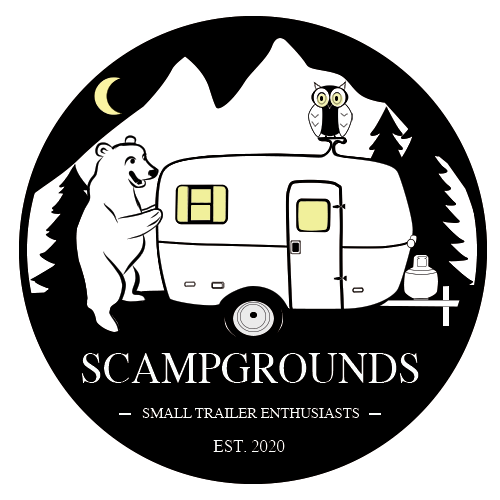Secure Your Power Cords To Prevent Damage
https://scampgrounds.com/wp-content/themes/osmosis/images/empty/thumbnail.jpg 150 150 gavin gavin https://secure.gravatar.com/avatar/99f9cd14e6ca957f921a5ace7d1dcdf0fccde566155f0e4da610ff0b7f10e2b0?s=96&d=mm&r=gSecure Your Power Cords To Prevent Damage
It’s very important to secure your power cords to prevent them from dropping and hitting the road. There are two power cords on a Scamp. One allows the Scamp to plug from the front of the trailer into the back of the car to provide 12 Volt power from the tow vehicle to the Scamp while driving. This is useful for powering the 12 Volt refrigerator while driving. The other cable is located at the back of the Scamp and is the charging cable. If either cable drops while you are driving, it’s very likely that the head of the cable will get damaged as it bounces off the concrete. Additionally, the cord could potentially hit your trailer, car and/or another car causing additional damage.
Unbeknownst to us, our Scamp has a plastic cover that snaps closed with a firm push to hold the power cord in the Scamp. On our first few trips, I just pushed the cover closed (but not snapped down) and everything seemed to work fine. On our way back home from Lake Tahoe, we noticed people in cars adjacent to ours on the freeway pointing to the back of our Scamp. It’s always disconcerting when you see people with concerned expressions pointing to your trailer! All sorts of thoughts come racing to mind.
When I looked in the rear view mirror, I saw the Scamp power cable bouncing off the road. I quickly pulled over and put the cord back into its holder and then used tape to secure the hatch. Fortunately, we caught it quickly and the plug on the cord only had minor scrapes and it was still functional. I called Scamp later and they told me to make sure to “snap” the cover into place!
A couple weeks later, our friend Dana told us about her issue. In her case, the front cable, which connects the Scamp to the tow vehicle (in order to power the brake lights, flashers, and auxiliary 12V power), came lose while driving. Unfortunately, the cable was damaged beyond use by scraping against the road. She is going to look into either replacing the entire cable or perhaps just the plug.
I’ve added checking the snap on cover to the power cord on our trip checklist to make sure this never happens again! Additionally, we will also check to make sure the cable that plugs into the car is firmly seated and providing ample power to the Scamp (using Voltmeter installed in Scamp). When the car is running, the Scamp generally shows over 13.5 Volts when plugged into the vehicle.
Disclaimer: You will get the same great Amazon price by clicking on the links here compared to buying directly on Amazon, but by buying here you will also be supporting the continuation of this website as we get a small commission from each sale. These are products and procedures we use for our own Scamp that we selected and developed from our own research and experiences. However, we do not endorse any specific product and cannot guarantee that the products we use are exemplary and the procedures we use are complete, accurate, detail the correct recommended procedures, or apply to your model small travel trailer. It’s always best to double check with your manufacturer or operation manuals to ensure you are doing everything correctly.
























































































